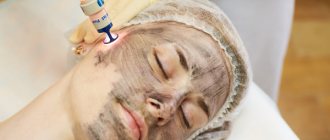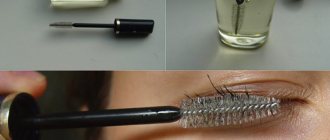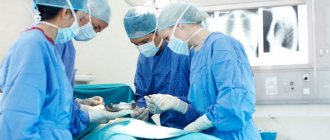Indications
- For those who have scars and hairless scars in the eyebrow area.
- For those who have completely or partially lost their eyebrows as a result of various diseases, chemical and other influences.
- For those who plucked their eyebrows for too long and vigorously and thereby spoiled them and disrupted their growth.
- For those who have serious problems with the shape, width, thickness or symmetry of the eyebrows, which are difficult to correct in other ways.
- For those who want to change their eyebrows for aesthetic reasons.
Dr Serkan Aygin Clinic
The medical center is located in the center of Istanbul. The building is equipped with advanced equipment and has 10 operating rooms. The staff is carefully selected and highly qualified. The surgeon has performed more than 10 thousand operations. Every year thousands of clients from around the world come to the doctor to get rid of baldness once and for all.
Surgery will help if baldness is caused by androgenic effects, bruises or burns. Take a look at the hair transplant results of our patients.
>>> See photos and video reports from our patients
Contraindications
- Poor blood clotting.
- Allergy to painkillers such as lidocaine. And without local anesthesia, the procedure is quite problematic.
- Mental disorders associated with a person’s desire to pull out hair on his body (trichotillomania).
- Diabetes.
- Pregnancy and breastfeeding period.
- Too pronounced rough scars in the eyebrow area, since in this case the probability of hair engraftment is very low.
- Autoimmune connective tissue diseases such as dermatomyositis, scleroderma and others.
An eyebrow transplant procedure should not be done if the cause that led to previous hair loss has not been eliminated.
Indications for eyebrow transplant
The desire to please another is a natural reaction of every person. However, the presence of certain defects in appearance can cause isolation, depression and psychological instability.
Hair loss is the main reason for eyebrow transplantation. This problem is caused by a number of disorders in the human body, the impact of which is reflected in appearance. Any mechanical damage (trauma, burns) may be a reason to contact a plastic surgeon for aesthetic correction of the eyebrow shape. The following indications for transplantation are distinguished:
- loss of a significant area due to hormonal changes, injury;
- hair loss due to chemotherapy;
- psychological uncertainty after eyebrow loss:
- baldness due to poor-quality tattooing;
- neurotic disorders that are associated with involuntary hair pulling;
- the presence of scars or scars.
The transplant is performed only after eliminating the cause of hair follicle loss. Otherwise, the operation will be useless. Loss of natural beauty of eyebrows occurs due to the following:
- changes in the body during pregnancy;
- nervous breakdowns;
- poor nutrition;
- using cheap cosmetics;
- damage to hair follicles due to aggressive plucking.
We recommend reading about scalp hair transplant. You will learn about indications and contraindications for the procedure in women and men, options for hair transplantation, and methods of hair transplantation. And here is more information about mesotherapy for hair growth.
Advantages
- Allows you to restore completely lost eyebrows, regardless of the reasons that led to this.
- Allows you to adjust the shape of your eyebrows and make them more attractive.
- If the shape of the transplanted eyebrows was chosen correctly, you will not need to spend a lot of time correcting them in the future.
- Does not require regular repetitions.
Are there any contraindications?
Yes, although the procedure is simple, there are some contraindications:
- severe disturbances in the anatomy of the eyelids, caused by burns and injuries;
- worsened trichotillomania;
- cancer, severe anemia and other diseases that can cause hair loss;
- clear signs of baldness in the donor area;
- the patient has a tendency to form keloid scars.
There are no more obvious contraindications. If you do not experience the phenomena described above, you can safely contact foreign clinics for eyebrow and eyelash transplantation.
Flaws
- The procedure is painful, although it is performed under local anesthesia. After surgery, pain will continue for at least several days.
- There are quite a lot of contraindications.
- High price.
- Since transplantation is a plastic surgery, it is quite difficult to perform such a procedure.
- Complications may arise.
- You need to wait long enough until the eyebrows take on a pleasant appearance, recover and begin to grow on their own.
- Eyebrows require careful care for a long time.
What complications may arise?
Transplantation, like any other surgical intervention, can cause serious complications.
Here you can find:
- redness and swelling of the skin in the transplant area, which persist for a long time;
- weak growth of the transplanted rods, because it stops completely;
- numbness of the skin;
- infection due to improper exposure, illiterate care during the recovery period.
To avoid the development of complications, it is necessary to carefully select the specialist who will perform the operation, carefully prepare for the procedure, and take care of the eyebrows during the recovery period.
What methods are there?
Patchwork (strip method)
This method is currently considered obsolete and is rarely used. It consists of a surgical procedure to remove a defective area of skin from the eyebrow area and transfer there another area of skin taken from the donor area. This new area of skin is fixed using cosmetic sutures.
However, this method is quite complex and not very effective. The transplanted area of skin takes a long time to take root or may not take root at all, hair begins to grow only a few months after engraftment, and the area of the transplanted skin itself loses sensitivity due to damaged nerve endings. In addition, scars remain both in the eyebrow area and in the donor area from where the skin fragment was taken.
Recently, this method has been improved - the skin area is not engrafted entirely, it is divided into small fragments (grafts), and then each of them is individually installed in the right place. However, many disadvantages of the method still remain.
However, this is the only way to restore eyebrow hair in cases where there is a large number of scars in the working area.
The video describes in detail hair transplantation using the strip method.
Seamless transplantation technique (STI)
This technique is less traumatic. Hair grafts are removed from the donor area non-surgically. In this case, one or two hair follicles are usually taken. They are then transferred to and inserted into the incisions made in the eyebrow area. Since the incisions are small, there are no stitches, so the aesthetics of the subsequent result are much higher. In addition, eyebrows quickly take root and begin to grow, without pain, swelling or loss of sensitivity.
This procedure is very painstaking, which is why this transplantation method is much more expensive than a patchwork one. But the result is much better.
HFE technique
This technique is currently the most common. Its popularity is determined by the fact that it is performed without surgery, therefore, there are far fewer side effects and subsequent scars. The transplantation is carried out using very thin micro-instruments, which make it possible to very carefully remove hair follicles from the donor area, without damaging either the skin or nerve endings, and then just as carefully place them in the eyebrow area, without making incisions. As a result, eyebrows heal within a few days and begin to grow quickly.
The video shows the most popular and in demand eyebrow transplant method now - HFE, showing the entire transplantation procedure and the tools used.
Eyebrow hair transplant
Some women, hearing the phrase “Eyebrow hair transplant,” make a skeptical expression on their faces, suggesting that this is a procedure from the realm of science fiction. The other half knows about this procedure, but without knowing all the details, they discard this idea for later. We will reveal and tell you all the subtleties and stages of the procedure.
Eyebrow hair transplant
The first step is to find a suitable clinic and doctor. The main nuance is to find not only a qualified transplant doctor, but also that he has an artistic eye and sense of taste. A high-quality transplant is 50% of success, because the correct curve, natural thickness and understanding of your facial proportions must be present. Therefore, we advise you not to take risks and not to do procedures at reduced prices.
Before surgery, you need to make sure that if the cause of hair loss was a disease, it has already been cured.
For eyebrow hair transplantation, hair is used from the area behind the ear or near the neck, where it is thinnest and most suitable for this purpose.
Today there are 3 methods of eyebrow transplantation:
- Strip - with this method, skin flaps with several hair follicles are used for transplantation. Grafts are cut out from these flaps and transplanted to the required area. New hair takes root and begins to grow within a period of 2 weeks to a month.
- Fue - with this technology, hairs are removed using a special punch machine and inserted into prepared holes in the eyebrow area. This method is easier than Strip, but still not considered minimally invasive. Today, almost all clinics perform transplantation using the FUE method. And at one time you can transplant a larger number of nails than with a conventional procedure.
- HFE is a more delicate procedure with a quick recovery period. The hairs are extracted manually using a special micro instrument and then transplanted. This is a seamless transplantation method; its use eliminates the possibility of scar formation and reduces rehabilitation time. With this method, new hair growth begins within a week.
HFE transplantation technology is also used for eyelash transplantation. This procedure is somewhat more expensive than eyebrow transplantation, but the effect is excellent.
Stages of eyebrow transplantation
- The first stage is eyebrow design. Here the doctor, together with the client, draws the ideal shape, possible thickness and hair growth. The required number of grips is calculated. On average, from 50 to 200 griffs are required, with no more than 2 hairs in one griff.
- The second stage is an examination. You will need to undergo a small list of tests in order to assess your general health.
- The third stage is the actual operation of hair transplantation in the eyebrow area. Donor hairs and nails are collected. After removal, the hairs are treated with a special compound to increase their lifespan. Micro incisions are made on the skin where each nail is placed at the required angle. During the entire procedure, the doctor repeatedly checks all transplanted hairs to achieve the ideal shape and correct angle. With a well-performed operation, the result is visible almost immediately. Usually this procedure is performed under local anesthesia and takes from 2 to 4 hours.
- The fourth stage is the recovery stage, depending on the method of the procedure, it can be different. Let's consider the average condition after surgery. A slight swelling occurs, this is normal and it disappears completely within 5 to 7 days. Bruises under the eyes may appear, which is also part of the norm. During this period, it is important to strictly follow all the doctor's instructions and attend regular checkups.
Eyebrow transplant photo
The process of hair engraftment is quite individual, it can take up to 3 – 5 months. As soon as the hairs begin to grow, you need to start guiding them with a special gel and brush. Sometimes it becomes necessary to trim them, it depends on the area from which the hair was taken.
It happens that one procedure is not enough for clients, then after 4-6 months a correction is carried out. These details are discussed at the preliminary consultation and depend on the initial condition of the eyebrows.
What tools and materials are needed to carry out the procedure?
The tools primarily depend on the method to be used. If we consider the currently most common HFE technique, the set of tools and materials will be as follows:
- surgical marker for drawing the contours of future eyebrows and marking the working area for transplantation;
- a set of microtools consisting of a punch and a needle-implanter;
- microscope for selecting healthy hair follicles and counting grafts;
- lidocaine or other local anesthetic;
- cleansers and disinfectants;
- a special composition for treating follicles for their better engraftment.
How is the healing process of eyebrows after transplantation?
The healing process depends entirely on the technique used to perform the operation. When implementing HFE, healing occurs unnoticed. pretty quickly. Only for the first 5-7 days there may be some swelling of the tissues, redness of the area of the superciliary arches.
The entire recovery period must strictly follow the recommendations given by the surgeon. If the patient takes full care of his eyebrows, achieving a positive result will not be long in coming.
How is it performed and how long does the procedure take?
- There is a discussion of the desired shape of the eyebrows and their design. It is determined how many follicles are needed and from which area they will be taken.
- The contours of the eyebrows are drawn with a surgical marker, and the donor area is also outlined.
- Working areas are disinfected, local anesthesia is given in the eyebrow area and in the donor area.
- Using micro-instruments, the required number of follicles is taken from the donor area.
- The taken follicles are examined under a microscope, and the required number of the healthiest ones is selected.
- Suitable hairs are treated with a special composition, which will facilitate their engraftment in the future.
- Small punctures are made in the eyebrow area, into which follicles are placed using special micro-instruments. At the same time, they are placed so that the natural direction of hair growth and angle of inclination are maintained.
The duration of the procedure depends on the number of hairs transferred. The more there are, the longer the procedure. For complete restoration of eyebrows it may take up to 5-6 hours, for partial restoration - 2-3 hours.
Rehabilitation period
After the operation, stitches are placed on the donor's head for no more than two weeks. A scar remains at the site of the incisions, however, it is significantly small and will be hidden under the hair. After four days, the patient will be able to fully enjoy the treatment of his hair. The appearance of new hair will begin in a few months. Hair growth will continue throughout your life. The hair that has been transplanted retains all its properties and characteristics. A former patient can do any experiments with his hair without fear of baldness again.
Professional and experienced doctors from the ELENA clinic, located at Novosibirsk, Gorky Street, 79, will help you find the luxurious hair at an affordable price that you have always dreamed of. The clinic provides a lifetime guarantee for this method of hair transplantation; numerous reviews speak about the quality of the work.
| Hair transplantation | |
| Hair transplant in Moscow | Hair transplant in Ufa |
| Hair transplant in Kazan | Hair transplant in Makhachkala |
| Hair transplant in Turkey | Hair transplant in Istanbul |
| Hair transplant in Minsk | Hair transplant in Novosibirsk |
| Hair transplant in Krasnodar | Hair transplant in St. Petersburg |
Similar articles on the topic of transplantation
- Liver transplant in Novosibirsk
- Heart transplant in Novosibirsk
- Stool transplant in Novosibirsk
- Hair transplant using HFE, FUE, Strip method
- Hair transplantation
- Hair transplant in Moscow
How to care for eyebrows after the procedure?
- Immediately after the procedure, eyebrows should not be wet, but they must be washed using special products several times a day for a week.
- Once a day you need to apply a healing ointment to your eyebrows.
- The crusts that form cannot be peeled off. In addition, you should not scratch your eyebrows.
- During the week, you should avoid intense physical activity, work at an angle, and be exposed to heat.
- In the future, eyebrows must be combed regularly, styled with gel if necessary, and trimmed with nail scissors.
How to prepare for the procedure?
In order for the procedure to be carried out properly, it is very important to find a transplantologist with ideal taste, certain qualifications, and extensive experience in this field. No one does a transplant in order to subsequently subject their own face to correction or additional procedures. Therefore, it is important to get the optimal result the first time.
The transplantation process begins with a mandatory consultation, where the surgeon and the patient will discuss a number of issues:
- future work area;
- donation area;
- number of transplanted grafts;
- the general appearance of the new eyebrows, their shape, width, length, other features (this point requires close attention, because the transplant is not subject to correction).
When the main points are identified, the transplantologist highlights the following points:
- method of operation;
- progress of work;
- the benefits of this type of impact;
- features of future arcs;
- place for collecting raw materials for transplantation;
- calculation of the total cost of surgery, including anesthesia and subsequent care;
- concluding an agreement for the provision of medical services;
- recommendations for preparing for exposure.
In order for the operation to take place without unpleasant consequences, a number of restrictions must be observed 10 days before the operation:
- drinking alcohol;
- smoking;
- taking any medications (if necessary, their use continues only after obtaining approval from the surgeon and attending physician).
What is and features of eyelash transplantation
Eyelash transplantation is the transfer of a hair from a donor to the eyelid.
It is performed with a special needle. Someone else's eyelash falls out over time, being replaced by one that grows on its own.
Doctors divide candidates for surgery into two main categories:
- People in need of a restorative transplant. The cause of eyelash loss is damage that leads to disruption of the integrity of the hair bulb and root, which makes further growth impossible.
- Those wishing to increase the volume or length of existing eyelashes. The doctor considers the wishes of such clients on an individual basis, assessing the possibility of transferring and engrafting donor material.
In the first case, doctors have large-scale work ahead of them. The first stage is an assessment of the following important factors:
- whether the affected tissues have the ability to accept and carry transplanted follicles and hairs;
- whether the donor material will be collected in the required volume and quality.
For restorative transplantation, patients who have lost eyelashes as a result of cancer must undergo examination and diagnostics.
The surgeon determines the stage of the underlying disease (active or remission, the duration of the period during which the disease does not manifest itself), and the list of medications used.
Transplantation is contraindicated if the main factor of eyelash loss has not been eliminated.
Cancer that has gone into remission requires time for the body to recover. On average the period lasts 2 years.
Eyelash transplant surgery for patients with trichotillomania is carried out strictly after taking the obsessive condition under constant control. Consultations with a psychiatrist are required.
The restoration procedure after damage to the skin of the eyes is carried out after their complete healing and restoration.










